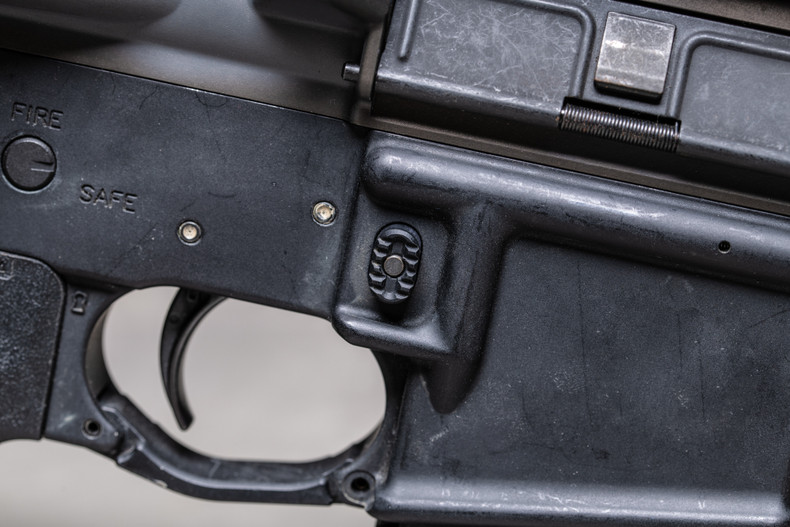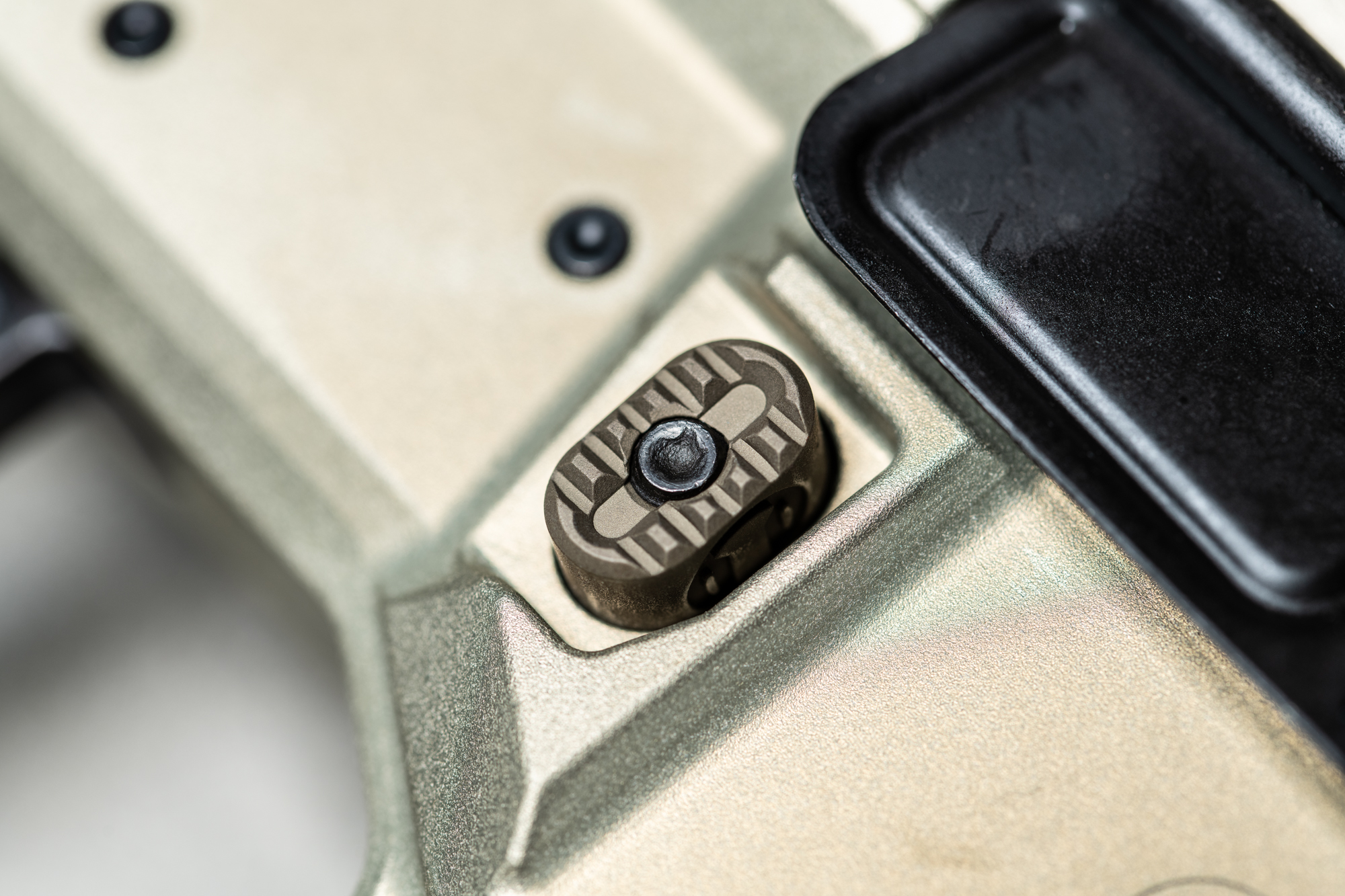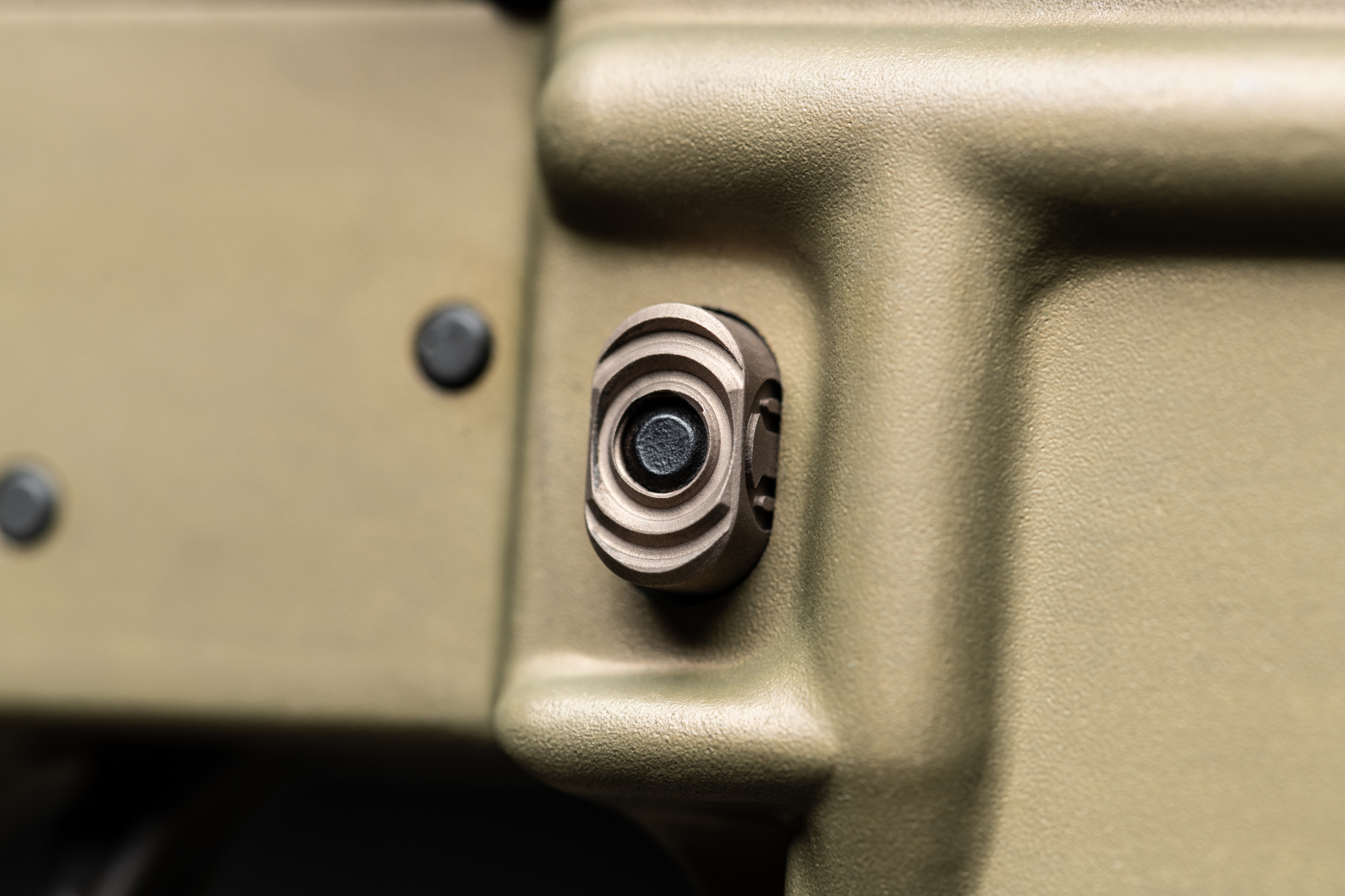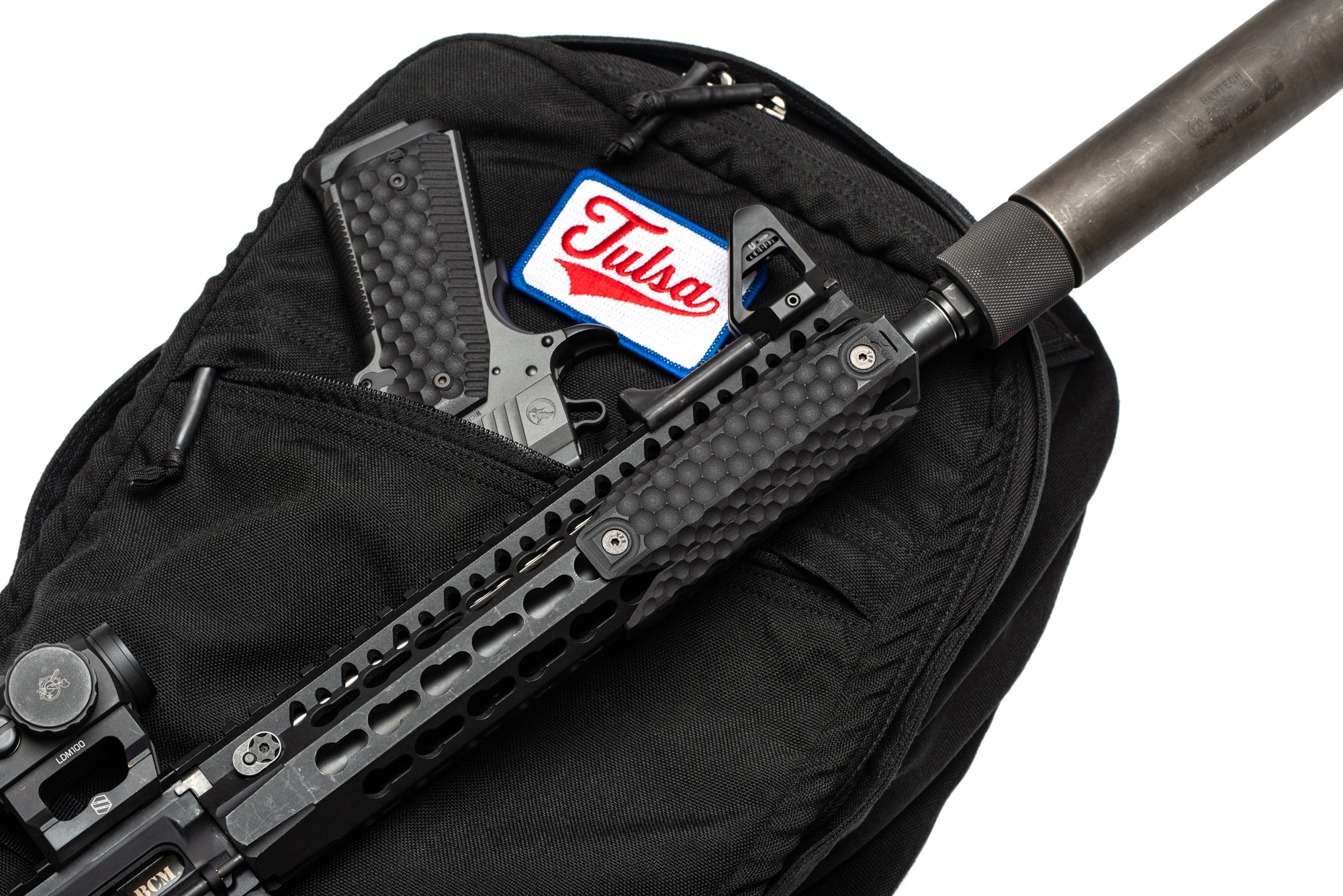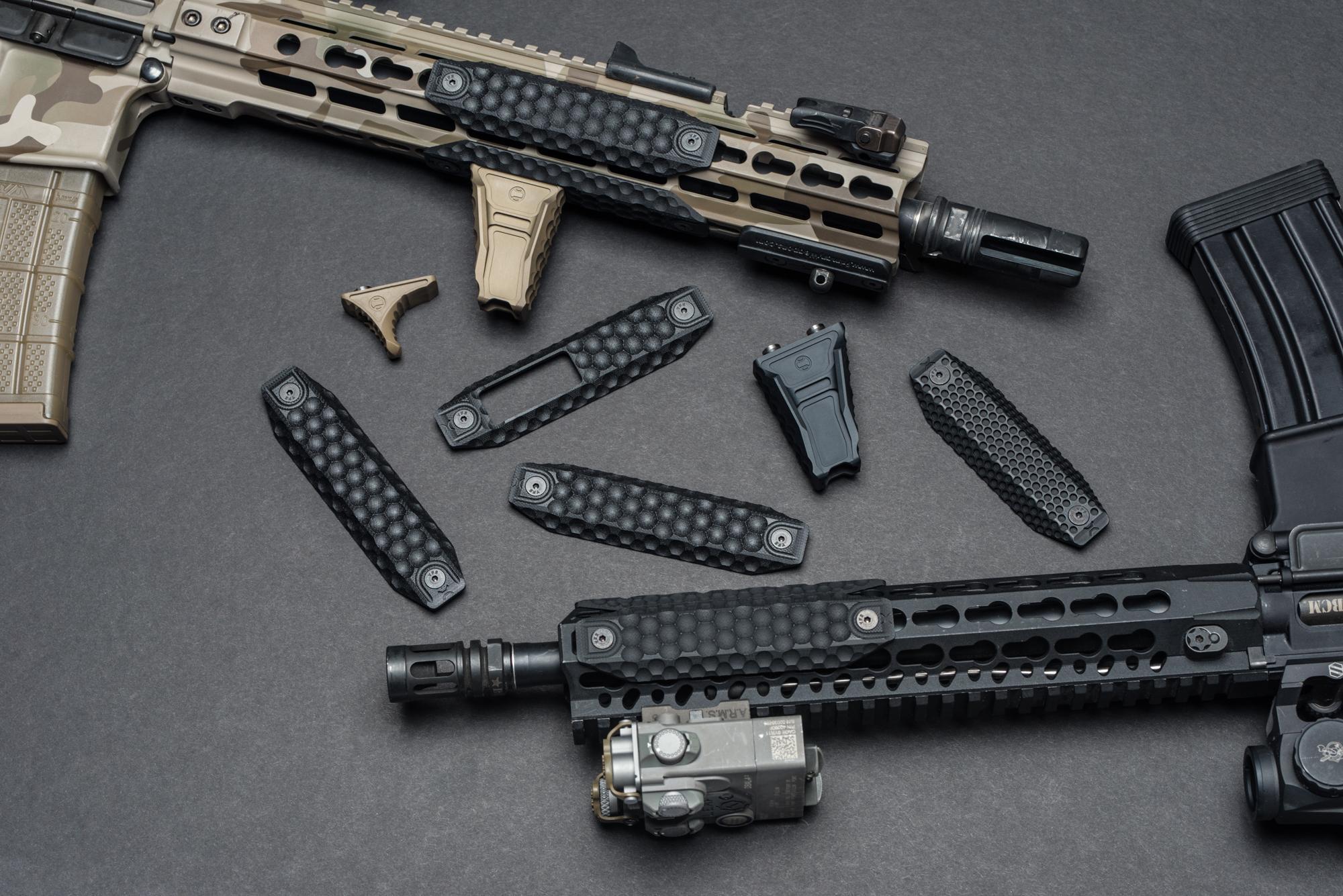The prospect of acquiring and then upgrading an AR-15 can be daunting, especially for someone relatively new to building their own firearm. While it may not seem as important as some other upgradeable parts of the rifle, a less-than-ideal AR-15 trigger can significantly impact an otherwise fun day at the range. Stock triggers have gotten better over the years, especially for those who choose to buy and outfit a more premium weapon. However, finding an AR-15 trigger upgrade that feels custom fit to the end-user can enhance performance when it's time to shoot, whether by modifying a stock trigger to a two-stage trigger on an out-of-the-box AR or building a custom rifle from the ground up. With the trigger-finger also sharing the responsibility of hitting the mag-release button, having a smooth transition while moving from mag-release to firing position and back is paramount for comfort and safety. A new AR-15 trigger guard can assist with comfort, and there are many great updates to the standard AR-15 mag release button, like the Apex model of the CSMR button from RailScales, which makes the transition from releasing a magazine to sending a round feel smooth and natural.
If you have totally revamped your AR-15 with accessories and additions that are supposed to help your marksmanship but you're still struggling to land shots on target, you might be wondering what could be wrong. After swapping out the barrel, dropping a $400 scope on the upper receiver, and adding more KeyMod handguard accessories than you can count, if you’re still not getting the accuracy you want, it may seem like it’s just been a bad day or week on the range, but the fault may not be with you.
Much like a performance-ready sports car, it’s what’s on the inside that matters most. You won’t hit anything if your trigger feels like you’re dragging a heavy bag of sand through a swamp. But if you haven’t put more thought into your trigger and trigger guard than keeping your finger clear of the trigger before you’re ready to shoot, it can be difficult to figure out where to get started.
As a leading manufacturer of AR-15 grips, stops, and more, the team at RailScales knows a thing or two about upgrading your rifle. So let’s talk about upgrading that stock trigger to something a little more useful.
Why Should You Upgrade Your Stock Trigger?
To make a long story short, stock triggers are just not great. They’re gritty. The pull is a mile-and-a-half long, and some are so stiff that you’ll wear out your tendons before you send a round down range. This can lead to strain and tension as you pull the trigger, forcing you to jerk the trigger back instead of giving it a slow, smooth pull.
Military AR-15 platform rifles typically have single-stage triggers that are not adjustable and have a trigger pull of around 5.5 – 9.5 pounds. While this is fine for military applications, it’s not great for those looking to make precision shots at long distances. Having a reliable and — more importantly — predictable trigger is a great way to improve your accuracy very quickly.
A smoother and lighter trigger also just makes the entire rifle easier to shoot. These features are especially valuable for those who are looking to compete with their rifle or take their AR-15 hunting. At the end of the day, your best shots start with the trigger and ensuring that you have a trigger that meets your needs is of vital importance if you want to do more than just leave ragged holes on paper targets.
Should You DIY Your Own Trigger Mods?
For many, when they think of upgrading their stock trigger, they think about becoming their own gunsmith. If you’re already a trained gunsmith, this might make for a fun afternoon project. However, if you’re not a trained gunsmith, we’d advise that you do not try and work on or change your existing trigger grouping in any way. At best, you’ll damage the part, cause it to wear out more quickly, and void the warranty while you’re at it. At worst, you’ll create a point of failure that can lead to an inert rifle or one that is prone to misfires. In either case, you’ve created a safety hazard that puts yourself and others at risk any time you load your rifle.
So with this in mind, it’s time to start looking for an aftermarket trigger grouping to drop into your lower receiver.
While there are a ton of options out there, they really fall into just a few categories. Understanding what the distinguishing features are will help you decide which trigger is best for you.
How an AR-15 Trigger Works
If you’re not familiar with the anatomy of an AR-15 trigger, it’s best to take a minute and learn about how they are put together. Your trigger mechanism features a few parts that work together. These include:
- The trigger is the piece that you squeeze to fire the rifle.
- The hammer is held in place by the sear until actuated by the trigger. When released, the tension pushes the hammer forward and into the firing pin within the bolt.
- The sear is where the hammer and trigger meet. The tension of the cocked hammer sits on the sear, keeping it from firing.
- The disconnector keeps the hammer from falling after a round was fired. It basically catches the hammer after each round is fired.
- The hook is a part of the hammer and is what the disconnector catches on while the weapon cycles. After a round is fired and the rifle cycles, the trigger resets, the hook lets go of the disconnector, and the trigger interfaces with the sear again, ready to fire.
While all triggers will feature these parts, how they make use of them and how they’re arranged will vary between triggers.
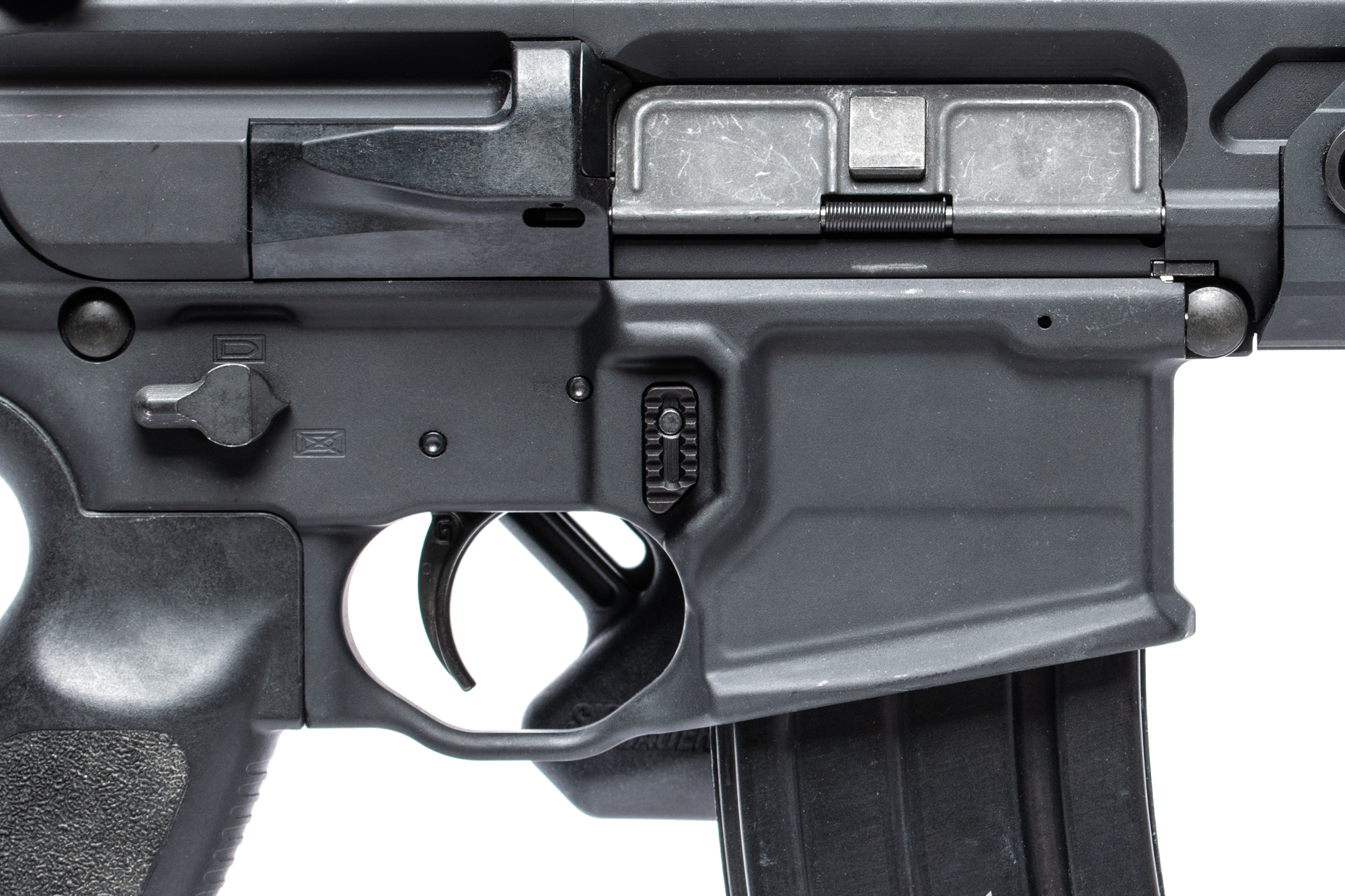
Types of Triggers
As you search for a new AR-15 trigger, you’ll find you have two kinds of triggers to choose from: single stage and dual stage.
Single Stage Triggers
This is the most common type of AR trigger available. Every M16 or M4 rifle issued in the military features a single stage trigger. In keeping with this trend, the vast majority of stock rifles will also come with a single stage trigger. But the quantity of these triggers has certainly not diluted their quality.
A single stage trigger can be used in a precision rifle quite easily. The reason for the popularity of the single stage trigger is its design and ease of operation. The trigger engages the sear, and by pulling the trigger, the sear releases the hammer. The movement of the sear as it disengages is called “creep” or “travel”. When you release your trigger, you’ll feel or hear a click. This is the disconnector releasing the hammer and hook and the sear setting up for the next shot.
For military contract weapons, the trigger pull weight for an AR-15 single stage trigger is heavy to prevent accidental discharge. But for sporting applications, these trigger pulls can be lightened significantly, from nine pounds to four or less. A lighter trigger pull is achieved by minimizing the amount of sear engagement. When properly trained and with a quality single stage trigger, a shooter can quickly and accurately deliver follow up shots down range.
Dual Stage Triggers
Recently, dual stage triggers have experienced something of a renaissance. Often being added to a custom build by DIY-types or by custom gunsmiths, dual stage triggers were initially found on every battle rifle issued by the U.S. military until the M16.
A dual stage trigger operates exactly as it sounds: the shooter pulls the trigger back with relative ease, then hits a wall that takes more effort to break through in order to fire the rifle. It’s not unlike a double/single action pistol that already has the hammer cocked back. This design allows the shooter to have a more predictable breakpoint for their shots. For many shooters, a dual stage trigger offers them a greater sense of control over their rifles and allows them to make more precise shots.
So Which Trigger is Right For Your Rifle?
Like so many different aspects of modifying and customizing your AR-15, it comes down to personal preference. If possible, we’d suggest trying both styles of triggers. If a buddy has a dual stage trigger, for instance, see if you can take it to the range and try it out. Your perception of how the trigger feels, and how it impacts your accuracy is important. Whatever type of trigger you decide to purchase, make sure you purchase the highest quality example you can. There’s no point in buying a cheap trigger if you have to replace it a few thousand rounds later. As the saying goes, buy nice or buy it twice.
Trigger Faces: It’s All About Feeling
Once you’ve determined which kind of trigger mechanism you want, you next have to figure out which kind of trigger face you want. Generally, you’ll find two more common trigger faces, with each offering their own advantages and disadvantages. Of course, it really does come down to whichever feels best for you, but it’s still important to consider their distinguishing features.
Curved Triggers
Curved triggers are the most common triggers you’ll find. They’re used on any number of firearms, and all generally have the same shape to them. Some argue that this gentle curvature offers you an ergonomic advantage. The pad of your trigger finger more readily settles into the curve, offering you better purchase when your fingers are wet or you’re in slippery conditions. This makes curved triggers ideal for “tactical” situations, or speed shooting competitions. However, others argue that curved triggers offer less finger sensitivity, making it difficult to put your finger in the same place after each shot.
Flat Triggers
Flat triggers are exactly that. The trigger face is typically a little wider than a curved trigger as well. Some prefer a flat trigger because it offers more leverage and more surface area. This can make it easier for some to make shots more quickly. Flat triggers are generally prized for their limited amount of movement and a smoother pull. However, these advantages may be more subjective than objective, and as dependent on how comfortable the person using them is as it does any actual benefit.
Order Your Keymod Handguard Accessories Today
If you're upgrading your rifle, you’ll want the best products available. At RailScales, we offer a variety of handstops, rail grips, and sights that are all easily connected to your Keymod handguards. Made from high-quality materials like HTP, G10, and metal, our ar15 accessories are ready for even the most intense days at the range. Order your AR-15 parts today.

